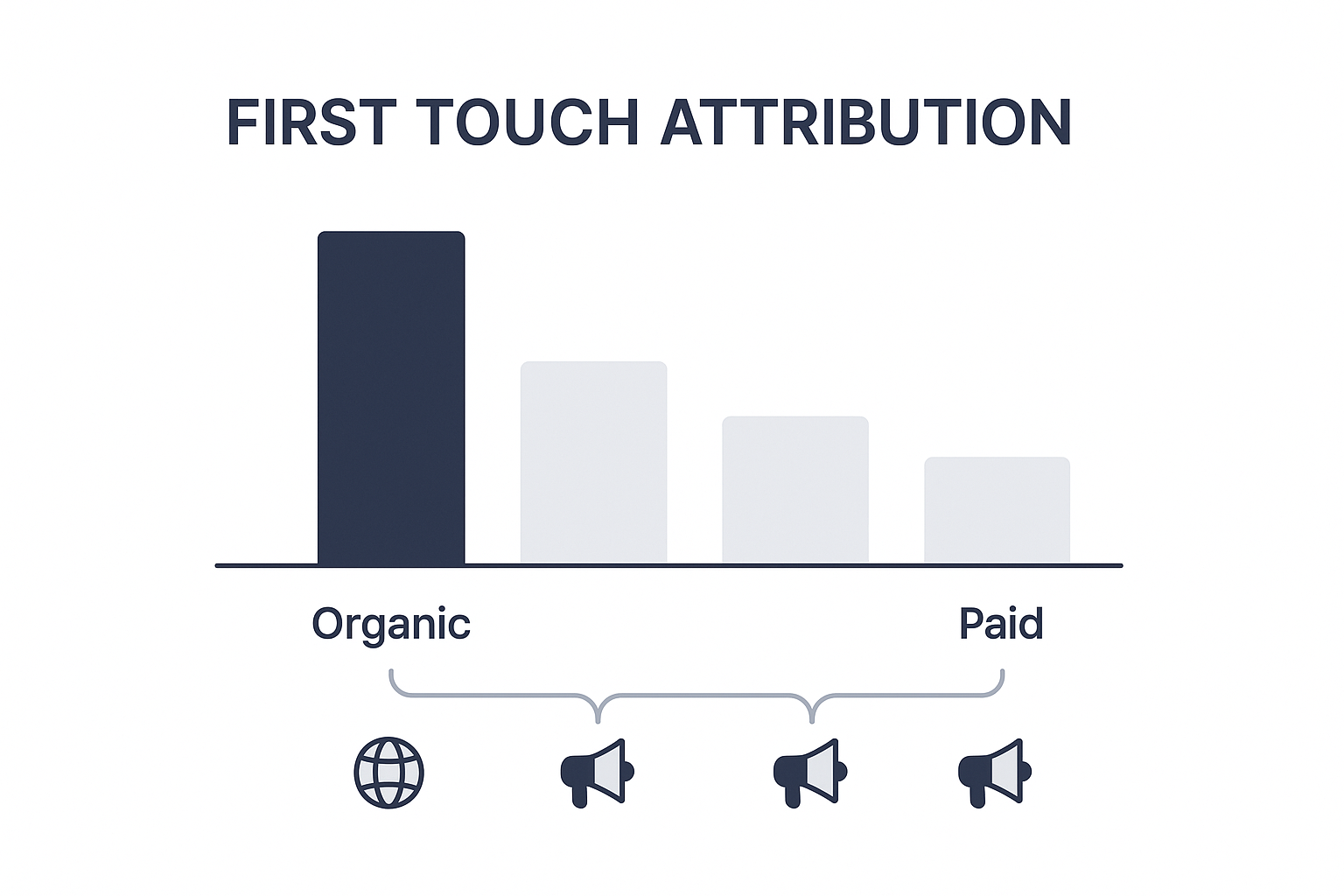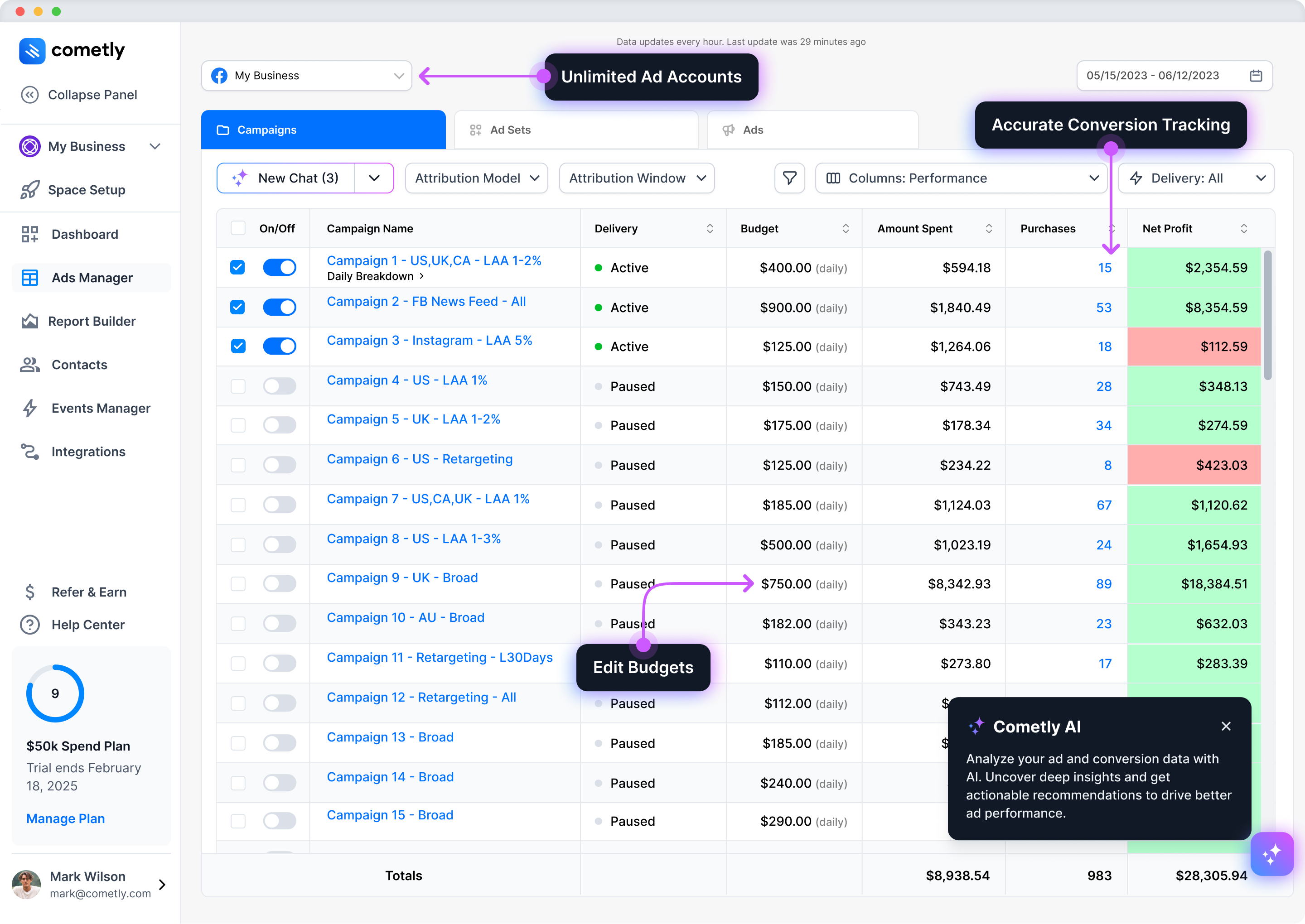Marketing has evolved dramatically in the digital age. With countless channels available, measuring the effectiveness of marketing campaigns can feel like navigating a complex maze. Many marketers find themselves overwhelmed by the sheer volume of tools and data at their disposal. Imagine launching a new product and not knowing which marketing channel drives the most sales, ultimately leading to wasted resources and missed opportunities. Understanding campaign performance metrics is akin to having a navigational map for your marketing efforts. By the end of this article, you'll gain clarity on how to measure your campaigns effectively, allowing you to optimize your marketing strategies and improve your return on investment (ROI). Let’s dive in!
Campaign performance metrics are quantitative measures used to evaluate the success of marketing campaigns across various channels. These metrics help you understand how well your marketing efforts align with your business goals. Key metrics include Return on Investment (ROI), Click-Through Rate (CTR), and Conversion Rates, among others. Think of these metrics like a scoreboard in a sports game, indicating how well your team is performing. Understanding these performance indicators is essential for making informed marketing decisions and optimizing your strategies.
For instance, if your CTR is low, it may indicate that your ad copy isn't resonating with your target audience. By measuring and analyzing these metrics, you can make data-driven adjustments that lead to improved campaign outcomes. To truly grasp the importance of these metrics, you might want to explore how to improve campaign performance with analytics for a comprehensive understanding of their application.
Understanding campaign performance metrics is crucial for marketers aiming to make informed decisions that positively impact ROI. Metrics help identify successful strategies and areas needing improvement, ultimately enhancing customer engagement. According to a report by the Data-Driven Marketing Association, companies that prioritize data-driven marketing are six times more likely to be profitable than their competitors.
Take, for example, a company that leverages marketing campaign analytics tools to track its marketing campaigns. By doing so, it can see which channels yield the highest ROI and adjust its strategy accordingly. This not only maximizes marketing spend but also leads to better customer retention rates. The ability to analyze performance metrics allows businesses to pivot their strategies based on real-time data, ensuring that their marketing efforts yield tangible results.
For more insights into how analytics influence strategic decisions, you can refer to resources on ppc campaign optimization.
There are various methods to measure the effectiveness of marketing campaigns, each contributing valuable insights. Understanding these techniques is essential for any marketer looking to enhance their campaign performance.
Measurement techniques are vital for assessing the effectiveness of marketing campaigns, providing marketers with actionable insights that drive strategy. By employing various methodologies, marketers can gain a comprehensive understanding of how their campaigns are performing and where improvements can be made.
Key Performance Indicators (KPIs): These are essential metrics that help gauge the success of a campaign. Common KPIs include metrics like Click-Through Rate (CTR), Conversion Rate, and Customer Acquisition Cost (CAC). For instance, a high CTR indicates that your advertisements are effectively capturing the attention of your target audience, while a high Conversion Rate suggests that your landing page is successfully persuading visitors to take action. Regularly tracking these KPIs allows marketers to identify trends and make data-driven adjustments to optimize campaign performance.
Attribution Models: Understanding the customer journey is crucial for effective marketing. Attribution models help marketers determine how different touchpoints contribute to conversions. For example, using a multi-touch attribution model allows marketers to see how various interactions—such as social media engagement, email clicks, and website visits—work together to lead to a sale. This insight is invaluable for allocating marketing budgets effectively and optimizing strategies based on the most impactful channels.

Data Collection Tools: Utilizing advanced data collection tools is essential for gathering and analyzing campaign performance metrics efficiently. Platforms like Google Analytics and marketing automation software provide comprehensive dashboards that display key metrics in real-time. These tools often allow for customizable reporting, enabling marketers to focus on specific metrics that align with their campaign goals. By integrating these tools into their marketing strategies, businesses can streamline data collection and ensure that they are making informed decisions based on accurate data.
A/B Testing: A/B testing is a powerful technique for optimizing campaign performance. By comparing two versions of an advertisement, landing page, or email, marketers can see which variation performs better in terms of engagement or conversions. This method allows for continuous improvement, as marketers can make incremental changes based on test results. For example, testing different headlines or calls to action can reveal what resonates most with the audience, leading to higher conversion rates.
By incorporating these measurement techniques into their marketing strategies, marketers can enhance their ability to evaluate campaign performance effectively. This structured approach not only improves decision-making but also contributes to a more agile marketing strategy that can adapt to changing consumer behaviors and market conditions.
Utilizing campaign performance metrics can significantly enhance marketing strategies and outcomes. These metrics empower marketers to refine their campaigns, minimize costs, and boost engagement levels. For instance, organizations that consistently monitor their performance metrics can make real-time adjustments to their campaigns, leading to more favorable results.
This proactive approach is essential in a fast-paced digital environment, allowing for swift strategic pivots when necessary. Furthermore, a solid understanding of these metrics aids in justifying marketing budgets and resource allocations to stakeholders, ensuring ongoing investment in effective strategies. In a competitive marketplace, the ability to effectively harness these insights can set successful organizations apart from those that face challenges. By incorporating performance metrics into their campaigns, marketers can unlock new opportunities and drive improved results.
Many marketers fall into traps that can skew their understanding of campaign performance. Recognizing and overcoming these pitfalls can lead to more accurate assessments and improved strategies.
Over-Reliance on Single Metrics: Focusing exclusively on one metric can provide a distorted view of success. For instance, a high CTR may not necessarily correlate with high sales if the landing page doesn't convert effectively.
Ignoring Context: Metrics must be understood within the broader marketing landscape. A dip in performance might be due to external factors, such as seasonal trends or economic shifts, rather than a failure in strategy.
Failing to Adjust Campaigns: Data should lead to actionable changes in strategy. Without regular reviews and adjustments based on performance metrics, marketers risk missing opportunities for improvement. For insights into common attribution challenges in marketing, consider reviewing our resource on data attribution.
Implementing best practices can significantly enhance the effectiveness of campaign performance tracking. Here are some expert strategies to keep in mind:
Set Clear Goals: Establish SMART (Specific, Measurable, Achievable, Relevant, Time-bound) goals for each campaign. Clear objectives help align metrics with desired outcomes.
Regularly Review Metrics: Routine analysis of performance metrics leads to timely adjustments and improvements. Setting a schedule for reviews can ensure that you stay on track.
Leverage Automation Tools: Automation simplifies tracking and reporting processes. Tools can help aggregate data from various channels, making it easier to analyze performance holistically.
Consider exploring google ads keyword optimization to elevate your campaign performance and streamline your metrics tracking.
Implementing campaign performance metrics effectively requires a structured approach. Here’s a practical roadmap to guide your efforts:
Identify Key Metrics: Determine which metrics are most relevant to your goals. Tailor your measurement strategy to focus on what matters most for your campaigns.
Set Up Tracking Systems: Utilize tools to collect and analyze data efficiently. Make sure your systems are integrated for seamless data flow.
Review and Adjust Regularly: Make performance reviews a routine part of your marketing strategy. Regular assessments help ensure your metrics remain aligned with your business objectives.
By following these steps, you can start tracking your campaign performance metrics effectively and uncover actionable insights that drive better results.
In the realm of digital marketing, tools like Cometly Ads Manager are becoming increasingly essential for optimizing campaign performance metrics. This platform offers comprehensive features that enable marketers to track, analyze, and enhance their advertising efforts across various channels. By integrating multiple data sources, Cometly Ads Manager allows users to gain a unified view of their campaign performance, facilitating more informed decision-making.

Key Features of Cometly Ads Manager: One of the standout features is its robust analytics dashboard, which provides real-time insights into key performance indicators (KPIs) such as Click-Through Rate (CTR), Conversion Rate, and Cost Per Acquisition (CPA). This capability allows marketers to pinpoint which ads are performing well and which require adjustments, ultimately leading to more effective budget allocation.
Moreover, Cometly Ads Manager supports advanced attribution modeling, enabling marketers to understand how different marketing channels contribute to conversions. This insight is crucial for optimizing marketing strategies, as it helps identify the most impactful touchpoints in the customer journey.
Another advantage is the platform's automation capabilities, which streamline reporting processes. By automating data collection and reporting, marketers can focus more on strategy and creative aspects rather than getting bogged down by manual analysis. This not only improves efficiency but also ensures that the marketing efforts are consistently aligned with campaign goals.
For organizations that prioritize data-driven decision-making, leveraging tools like Cometly Ads Manager can significantly enhance their ability to track campaign performance metrics effectively. As marketers continue to navigate the complexities of digital advertising, such platforms will play a vital role in achieving optimal results and maximizing return on investment.
Understanding and applying campaign performance metrics can transform your marketing efforts. These metrics provide clarity, direction, and improved ROI, allowing you to make informed decisions that enhance campaign effectiveness.
Reflect on how a company can pivot its strategy based on data insights. With the right metrics in place, you can navigate the complexities of marketing with confidence and achieve your business goals.
In today's competitive landscape, understanding and leveraging campaign performance metrics is not just beneficial; it's essential for success. By grasping the nuances of these metrics, marketers can effectively track their campaigns, make informed decisions, and ultimately improve their return on investment. The journey through the various dimensions of campaign performance metrics has highlighted their importance in guiding strategic decisions, optimizing marketing efforts, and enhancing overall business outcomes.
As we explored the intricacies of performance measurement, it became clear that avoiding common pitfalls—such as over-reliance on single metrics and ignoring the context of data—can significantly enhance campaign effectiveness. With a structured approach, including setting clear goals, utilizing effective measurement techniques, and regularly reviewing performance, marketers are well-equipped to navigate the complexities of their campaigns.
Moreover, the power of automation tools cannot be understated. By streamlining data collection and analysis, these tools free up valuable time for marketers to focus on strategy and creative aspects of their campaigns. The integration of automation into your workflow not only increases efficiency but also ensures that you are consistently tracking the right metrics that align with your business objectives.
With this comprehensive understanding of campaign performance metrics, you are now ready to take action. The next step is to begin implementing these strategies, starting with identifying key metrics relevant to your campaigns and setting up robust tracking systems. Remember to treat the review of your performance as an ongoing process—one that should be regularly revisited to adapt to changing market dynamics and consumer behavior.
Learn how Cometly can help you pinpoint channels driving revenue.
.svg)
Network with the top performance marketers in the industry